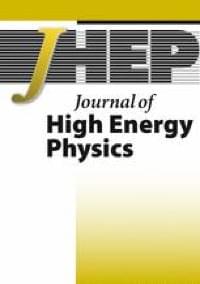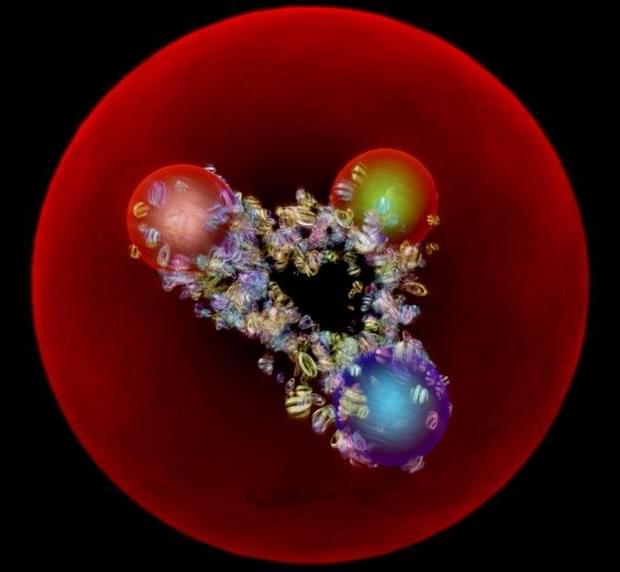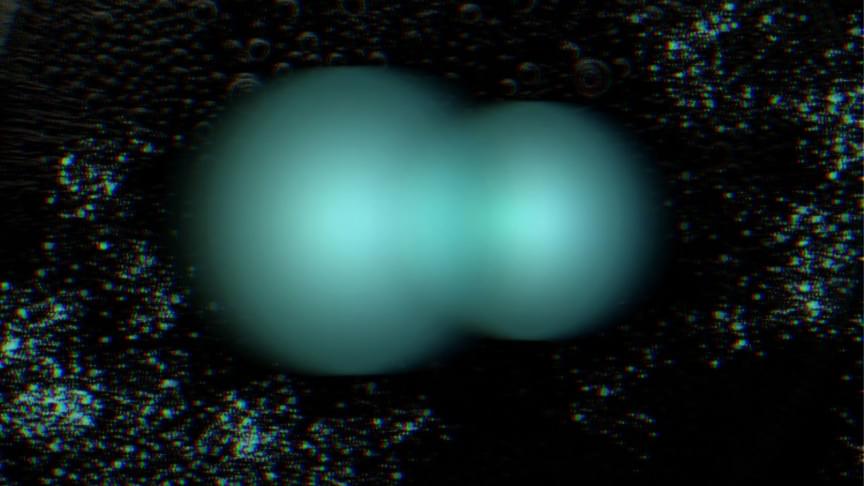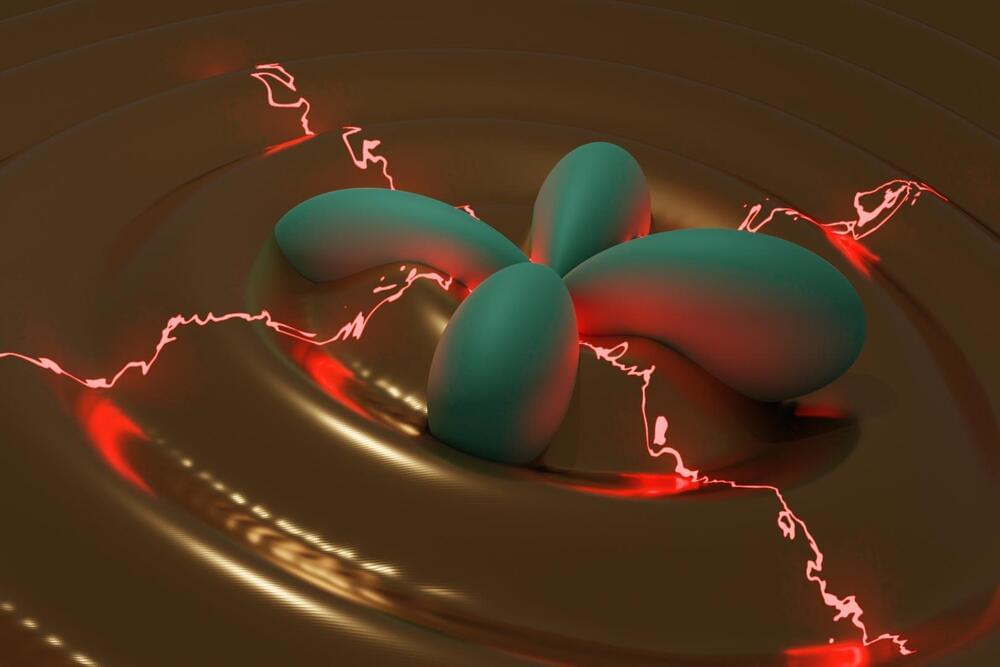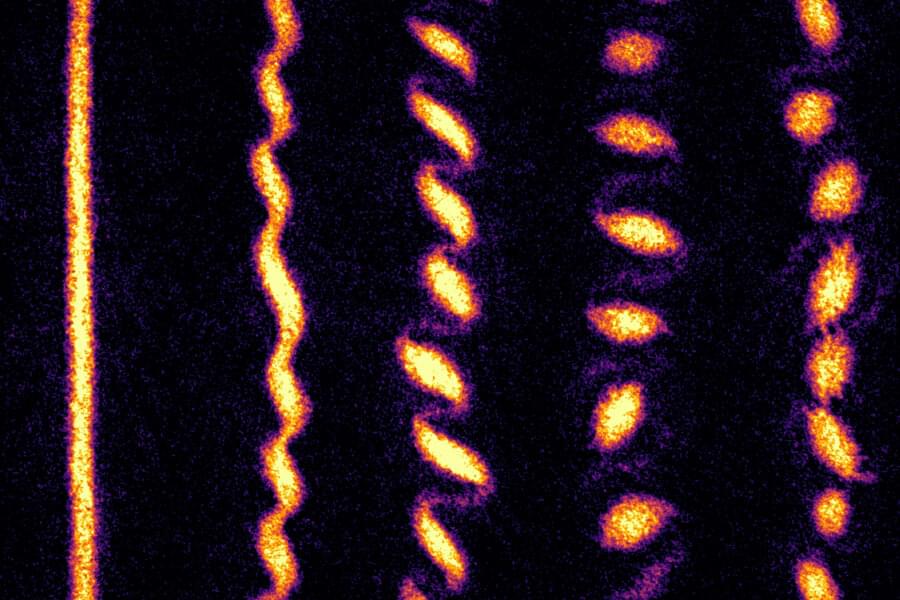The atomic nucleus is a tough nut to crack. The strong interaction between the protons and neutrons that make it up depends on many quantities, and these particles, collectively known as nucleons, are subject to not only two-body forces but also three-body ones. These and other features make the theoretical modeling of atomic nuclei a challenging endeavor.
Category: particle physics – Page 364
Circa 2020
We discuss the possibility to predict the QCD axion mass in the context of grand unified theories. We investigate the implementation of the DFSZ mechanism in the context of renormalizable SU theories. In the simplest theory, the axion mass can be predicted with good precision in the range ma = (2–16) neV, and there is a strong correlation between the predictions for the axion mass and proton decay rates. In this context, we predict an upper bound for the proton decay channels with antineutrinos, τ p → K + ν ¯ ≲ 4 × 10 37 $$ \tau \left(p\to {K}^{+}\overline{
u}\right)\lesssim 4\times {10}^{37} $$ yr and τ p → π + ν ¯ ≲ 2 × 10 36 $$ \tau \left(p\to {\pi}^{+}\overline{
u}\right)\lesssim 2\times {10}^{36} $$ yr. This theory can be considered as the minimal realistic grand unified theory with the DFSZ mechanism and it can be fully tested by proton decay and axion experiments.
While the Large Hadron Collider (LHC) at CERN is well known for smashing protons together, it is actually the quarks and gluons inside the protons—collectively known as partons—that are really interacting. Thus, in order to predict the rate of a process occurring in the LHC—such as the production of a Higgs boson or a yet-unknown particle—physicists have to understand how partons behave within the proton. This behavior is described in parton distribution functions (PDFs), which describe what fraction of a proton’s momentum is taken by its constituent quarks and gluons.
Knowledge of these PDFs has traditionally come from lepton–proton colliders, such as HERA at DESY. These machines use point-like particles, such as electrons, to directly probe the partons within the proton. Their research revealed that, in addition to the well-known up and down valence quarks that are inside a proton, there is also a sea of quark–antiquark pairs in the proton. This sea is theoretically made of all types of quarks, bound together by gluons. Now, studies of the LHC’s proton–proton collisions are providing a detailed look into PDFs, in particular the proton’s gluon and quark-type composition.
The physicists at CERN’s ATLAS Experiment have just released a new paper combining LHC and HERA data to determine PDFs. The result uses ATLAS data from several different Standard Model processes, including the production of W and Z bosons, pairs of top quarks and hadronic jets (collimated sprays of particles). It was traditionally thought that the strange-quark PDF would be suppressed by a factor of ~2 compared to that of the lighter up-and down-type quarks, because of its larger mass. The new paper confirms a previous ATLAS result, which found that the strange quark is not substantially suppressed at small proton momentum fractions and extends this result to show how suppression kicks in at higher momentum fractions (x 0.05) as shown in Figure 1.
To make fusion energy a viable resource for the world’s energy grid, researchers need to understand the turbulent motion of plasmas: a mix of ions and electrons swirling around in reactor vessels. The plasma particles, following magnetic field lines in toroidal chambers known as tokamaks, must be confined long enough for fusion devices to produce significant gains in net energy, a challenge when the hot edge of the plasma (over 1 million degrees Celsius) is just centimeters away from the much cooler solid walls of the vessel.
Abhilash Mathews, a PhD candidate in the Department of Nuclear Science and Engineering working at MIT’s Plasma Science and Fusion Center (PSFC), believes this plasma edge to be a particularly rich source of unanswered questions. A turbulent boundary, it is central to understanding plasma confinement, fueling, and the potentially damaging heat fluxes that can strike material surfaces — factors that impact fusion reactor designs.
To better understand edge conditions, scientists focus on modeling turbulence at this boundary using numerical simulations that will help predict the plasma’s behavior. However, “first principles” simulations of this region are among the most challenging and time-consuming computations in fusion research. Progress could be accelerated if researchers could develop “reduced” computer models that run much faster, but with quantified levels of accuracy.
A team of physicists from the Massachusetts Institute of Technology (MIT) has discovered a hybrid particle that could pave the way for smaller and faster electronic devices in the future.
The hybrid particle, which was found to be a mashup of an electron and a phonon (a quasiparticle formed by vibrating atoms in a material), was detected in a strange, two-dimensional magnetic substance.
Probably the most intriguing aspect of the discovery, however, is that when the scientists measured the force between the electron and phonon, they saw that the glue, or bond, was 10 times stronger than what had previously been estimated for other known electron-phonon hybrids, according to the study which has been published in the journal Nature Communications.
Hints of a new particle carrying a fifth force of nature have been multiplying at the LHC – and many physicists are convinced this could finally be the big one.
In the particle world, sometimes two is better than one. Take, for instance, electron pairs. When two electrons are bound together, they can glide through a material without friction, giving the material special superconducting properties. Such paired electrons, or Cooper pairs, are a kind of hybrid particle — a composite of two particles that behaves as one, with properties that are greater than the sum of its parts.
Now MIT
MIT is an acronym for the Massachusetts Institute of Technology. It is a prestigious private research university in Cambridge, Massachusetts that was founded in 1861. It is organized into five Schools: architecture and planning; engineering; humanities, arts, and social sciences; management; and science. MIT’s impact includes many scientific breakthroughs and technological advances.
Here’s a brain teaser for you: scientists are suggesting spacetime may be made out of individual “spacetime pixels,” instead of being smooth and continuous like it seems.
Rana Adhikari, a professor of physics at Caltech, suggested in a new press blurb that these pixels would be “so small that if you were to enlarge things so that it becomes the size of a grain of sand, then atoms would be as large as galaxies.”
Adhikari’s goal is to reconcile the conventional laws of physics, as determined by general relativity, with the more mysterious world of quantum physics.
The world we experience is governed by classical physics. How we move, where we are, and how fast we’re going are all determined by the classical assumption that we can only exist in one place at any one moment in time.
But in the quantum world, the behavior of individual atoms is governed by the eerie principle that a particle’s location is a probability. An atom, for instance, has a certain chance of being in one location and another chance of being at another location, at the same exact time.
When particles interact, purely as a consequence of these quantum effects, a host of odd phenomena should ensue. But observing such purely quantum mechanical behavior of interacting particles amid the overwhelming noise of the classical world is a tricky undertaking.
Circa 2014
Scientists have come closer than ever before to creating a laboratory-scale imitation of a black hole that emits Hawking radiation, the particles predicted to escape black holes due to quantum mechanical effects.
The black hole analogue, reported in Nature Physics1, was created by trapping sound waves using an ultra cold fluid. Such objects could one day help resolve the so-called black hole ‘information paradox’ — the question of whether information that falls into a black hole disappears forever.
The physicist Stephen Hawking stunned cosmologists 40 years ago when he announced that black holes are not totally black, calculating that a tiny amount of radiation would be able to escape the pull of a black hole2. This raised the tantalising question of whether information might escape too, encoded within the radiation.

